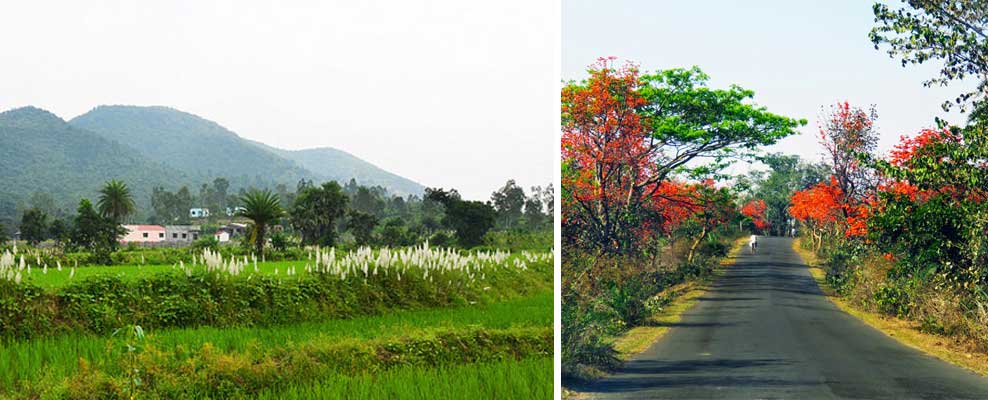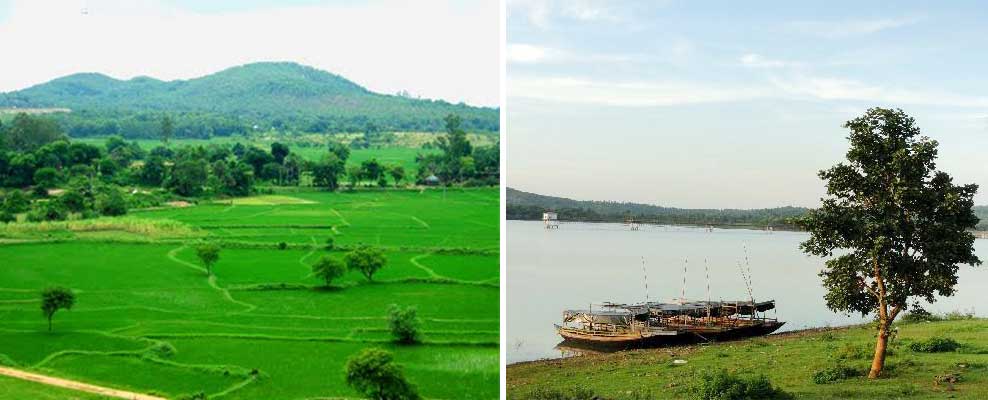
WoT's Hot
Most of Bankura’s land had been veiled by forest primordially. Archeologically speaking, many a spot in Bankura still bear testimony to the religious impact of Jainism as well as the Buddhist Mahayan tradition, which is entrenched near Susunia. Bankura can be described as the connecting link between the plains of Bengal on the east and Chhota Nagpur Plateau on the west. Biharinath and Susunia Hills punctuate the Plateau area attracting a plethora of tourists every year.
Reaching there:
Bankura is approximately 180km away from Kolkata and can be reached by bus and car. One can also avail a train till Bankura Junction.
Best time to visit:
The best time to visit Bankura and Bishnupur is from October to January as these months are characterized by moderate temperatures and enjoyable weather.

Susunia – Soaring at an altitude of a whopping 1442 feet, Susunia is a famous spot for indigenous sports like rock climbing and trekking and is covered luxuriously with a rich flora of majestic trees and medicinal plants. A trekker’s paradise, Susunia also hides a two-millennium old stone-inscription of Chandrabarman, marking the historicity of royal lineage there.

Jhilimili − A mesmerizing beauty resides in Jhilimili of Khatra Sub Division nestling lush forest on a hillock with the Kangsabati river flowing through the heart of Jhilmili. Sometimes tuskers from Dalma Hill visit, adding to the romance of this place.
Mukutmanipur − located at the confluence of Kangsabati and Kumari rivers is famous for its earthen Dam which is the second largest such Dam in Asia. Tranquil but delightful, this recess captivates picnickers and travelers in thousands every year. Tucked in a little niche at the entrance of Bankura Distict is Joyrambati, a place grown famous as the birth place of Shree Sarada Devi who is worshipped as the Holy mother.
Bankura is simply outstanding for its bevy of temples accentuating its lofty cultural heritage, Bishnupur still retains the flavor of an old Bengali Urban Complex which had witnessed great splendor and magnificence in the days of its power and glory. Bishnupur acquired much glory as a centre of Sanskrit learning and classical music. Classical vocalist like Jodu Bhatta of Bishnupur Gharana had adorned Jorasanko Thakurbari also. But besides, the naïve lilt of tusu songs also thrives vibrantly till today on the banks of Kangshabati and Kumari.

The structures of the eighteenth century temples, more precisely, the Rasa-mancha built by Hambir, for the worship of Madan Mohana are sprawled all over the terrain. The structures are mainly of two types – Chala and Ratna. The shapely towers rising upon the sloping roofs set against the open sky offer pictures of solemn beauty and elegance. Besides, the temples are embellished with exquisite set of terracotta figures depicting scenes from Ramayana and Krishna-lila episodes. The facades now present an ecstatic charm of poignant artistry and hold a secular appeal to the tourists’ eye exploring beauty per se.
Bishnupur holds an alluring tradition of Baluchari Saris resplendent in color and graceful in design and weaving. The weavers usually draw the motifs from the panels of temples and enliven them through their warp and woof. These vie with the latest textile designs in market.
If one is looking for a weekend getaway full of historicity and rich culture, Bankura and Bishnupur should definitely be on their bucket list.
Most of Bankura’s land had been veiled by forest primordially. Archeologically speaking, many a spot in Bankura still bear testimony to the religious impact of Jainism as well as the Buddhist Mahayan tradition, which is entrenched near Susunia. Bankura can be described as the connecting link between the plains of Bengal on the east and Chhota
Other Articles in Kolkata & Bengal
What to read next
Featured articles

Welcome Festive Season in Glam, Latin Quarters Launches new #PujoBling Collection with Monami Ghosh
by WOT








































